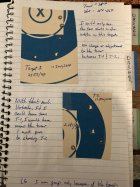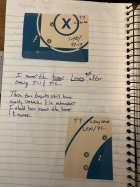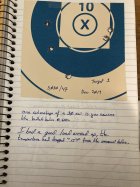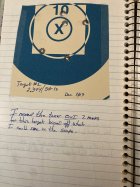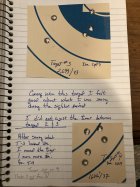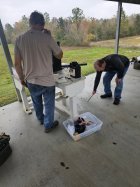There are many records shot through the years without tuners. My old gunsmith who is gone now said that he shot some of his best groups 100/200 without a tuner. However, the last several years that he shot (6ppc), he never moved it during a match and felt that it gave him a wider node. My own experience with the short game 100/200 ppc and 6BR had varying experiences and it became an issue of simply using a known load with and without the tuner. I had the tuner off the BR at a match and decided to check velocity with my Magnetospeed and just that little bit of weight turned so-so groups into killer groups. I shot the next two strings with chrono and had best 5 group I ever shot with that rifle. I think those responding here who use and sell tuners, know what they are doing. Across 6-7 calibers I have used them on, they have nothing for me past 500 yards. Shooting in the wind simply does not illustrate for me that the tuner is doing any good. If the tuner was responsible for the record, why are the other groups not that small?? I would never take anything away from Bart because he has set records without tuners! However, Like others said, how much time do you want to spend in order to know what the hell you are doing?? My hat is off to those who know!
To me, they are the easiest method to learn. Jme, but I find those with a good head and no preconceived notions either way to be the easiest to help and quickest to catch on to them but I think the same could be said of any tuning method.
Yes, wind and distance are certainly big factors but again, same either way. Which brings us to what tuners really are..they are a tool to tune with. Nothing really more than that.
A good rule of thumb is to leave the tuner alone unless you would get up and change your load. IOW, don't move it unless you know why you're moving it, for sure. But once again, same goes for other methods of tuning.
Do you know how much too bump your load up or down to keep up with conditions. I hope so, or would you randomly just change powder charges. Same kinda thing, yet again. It's a tool, not a crutch.
My method of finding the best base tuner setting is based very much on what I learned about reading group shapes over the years, before we had tuners in centerfire..or most of us. The tuner test I use is just a methodical approach that shows you basically the same group shapes as would happen if you break down powder charge increments to quantities equal to one mark on my tuner and how far between sweet spots. The same test would do the same thing with powder charge increments. The trick is knowing increment values relative to group shape, be that say, one mark at a time or 3 tenths of powder at a time...just an example but that's very close to right if we were only talking a 6ppc and n133.
Just imagine charting out 15 three shot groups, changing powder charge .3 at a time. Essentially the same. I'm just moving a tuner a mark at a time instead of my powder measure and watching what the test shows.
I hope all of this makes some sense. It's so much easier to do than to explain on forums.
Bottom line is, a tuner does very much the same thing as changing powder charge but you can leave your reloading gear at home. That's how I use tuners. There are still others that use them and still change powder charge as well. Not my way but if it works for them, that's awesome by me.













